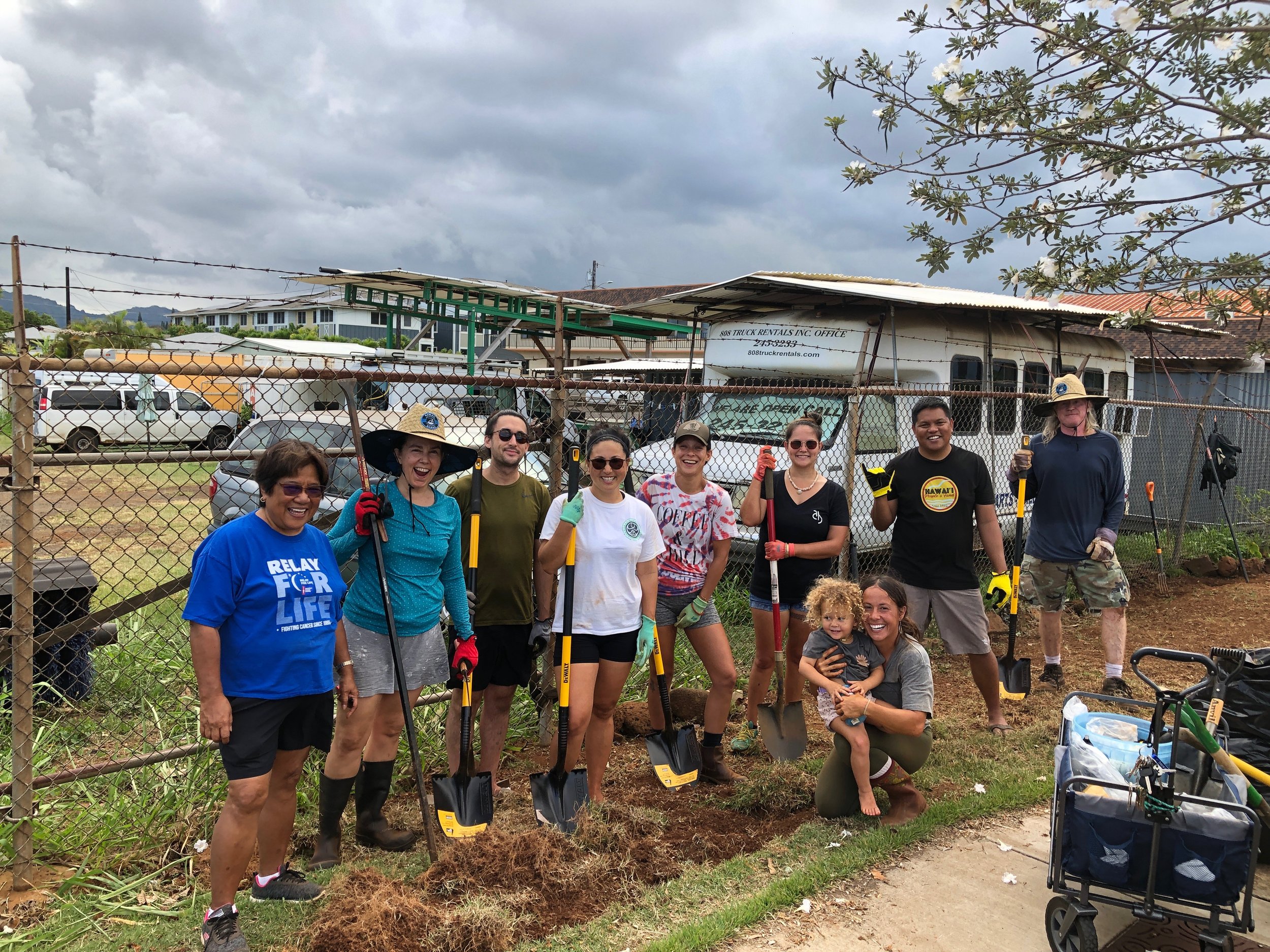How-To Guide:
Community Gardens
Many Hawaii residents would like to grow fruits, vegetables, herbs, and flowers, but often lack the physical space to do so. While some seek to save money on groceries, others seek the freshness, flavor, and wholesomeness of locally-grown produce and the exercise and relaxation that comes with being out of doors.
Community gardens offer residents the opportunity to garden, and also provide myriad of community benefits, including:
Beautifying neighborhoods and bringing neighbors closer together through a shared purpose
Reducing neighborhood crime, particularly when gardens are in formerly vacant, blighted lots
Improving gardeners’ mental and physical health
Enhancing access to safe, recreational green spaces
Improving urban air and soil quality and decreasing urban heat
Potential Spaces for Community Gardens:
The City and County of Honolulu (CCH) is the only one of Hawaii’s four counties that operates a community gardening program. The CCH Department of Parks and Recreation currently manages ten different community gardens on Oahu (view locations here). However, the program faces challenges in long waitlists for garden plots and expanding to new locations.
As an alternative to this, individuals/groups can consider utilizing vacant pieces of land on private property as community garden spaces. Examples of this include:
Kakaako Ocean Friendly Garden (Oahu) – Land owned by Kamehameha Schools; garden managed by the Surfrider Foundation, Oahu Chapter.
Right on Rice Urban Farm and Community Garden (Kauai) – Land owned by 808 Truck Rentals, garden managed by community volunteers, a project spearheaded by Better Block Hawaii and Rice Street Business Association, funded by the AARP Community Challenge Grant and Project for Places.
Key Steps:
Form a group – Gardens require regular maintenance and are best done in groups. Begin this process by gathering interested community members who are willing to help plan, build, and maintain the community garden.
Identify an appropriate garden site – Site selection should consider factors such as access to water, sunlight, and soil quality. The group should contact the property owner to receive approval before proceeding with developing a garden plan.
Develop a plan and select governance style – In addition to governing and managing the garden, the garden plan should include a layout that considers the needs and interests of the community, such as culturally relevant foods, language barriers, and ADA accessibility. Infrastructure components such as beds, paths, water sources, and more can be incorporated into a layout.
Secure funding – Determine the cost of building and maintaining the community garden, and seek funding from local businesses, foundations, government agencies, or consider a crowd-sourcing campaign through platforms such as ioby.org.
Build the garden – Once you have secured funding, organize volunteers to help build the community garden. This may involve clearing the land, building garden beds, installing water sources, and creating paths. Always call 811 before you start digging to ensure you don’t accidentally dig into an underground utility line.
Plant and maintain the garden – Once the garden is built, start planting and stewarding the garden. The groups should also create a schedule for watering and maintenance, assign tasks to volunteers, and encourage community members to participate.
Design and Management Considerations:
Native and non-invasive plant species – Invasive trees and plant species should be avoided. Native species have environmental benefits and also reduce maintenance demand.*
Garden plot size - Garden plots should be large enough to accommodate a range of plants, but small enough to be manageable for an individual to maintain.
Soil quality - In urban areas, soil quality may not be conducive to growing food. In these areas, garden beds should be considered as an alternative.
Garden governance - Prior to garden buildout, the responsible group should decide the rules and/or guidelines of the garden (ex: are pesticides allowed), how future decisions will be made, how plots are assigned, whether are there dues, and how information is shared, among other decisions.
*Visit www.plantpono.org to learn what plants are most at-risk for becoming invasive in Hawaii.
Costs and Needed Resources:
The cost to design, install and maintain a community garden is heavily dependent upon the location and size of the garden, as well as the type of included tree and plant species. The cost to initially install a five-by-five-foot garden plot could range from $100 to $1,000.
Resources needed to develop a community garden space include:
Applicant’s time to identify an appropriate site, receive approval, and develop a garden design
Trees, shrubs, plants and herbs from local nurseries
Soil, compost, weed mats, shovels, picks, and other supplies/materials to support initial planting, healthy plant growth, and maintenance
Lumber and other materials for garden plots and beds (if applicable)
Time and energy for initial planting and regular garden maintenance






